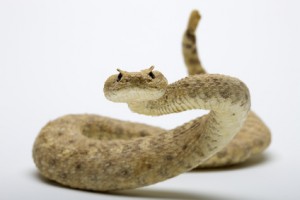

Everyone knows that the climate in Florida makes it a perfect spot for reptiles to flourish. There are alligators and lizards and frogs all over the place. And did you know there are 50 types of snakes in Florida, 50 types! If you fear snakes, this is terrible news. But there is good news in this, only 6 species out of the 50 are poisonous. How can you tell which ones are which?
First of all, even if you look up the snakes online and see pictures of them and learn where they live, I promise you that if you happen upon one in person, you aren’t going to be able to recall if that poisonous snake had one ring on its back or two. Just leave all snakes alone to be on the safe side.
Here are three of the poisonous snakes found in Florida:
*The Southern Copperhead. This snake is most likely pinkish in color. It is mostly found in the panhandle area of Florida. Not surprisingly, it likes wet, low areas around streams and swamps. The Southern Copperhead is about 3 feet long, but can get to 50 inches long in some cases. The head has large plate like scales on it. The venomous bite is painful but not deadly to healthy adults.
*The Water Moccasin. This dark colored snake is typically around 4 feet in length. This snake has distinctive stripes or crossbands on it. The head of the Water Moccasin is much broader than its neck. This is another snake that loves wet areas so it can be found in ponds, canals, streams, etc. The bite of the water moccasin is extremely dangerous and those bitten should seek medical help immediately.
*Diamondback Rattler. Most people can recognize the Diamondback Rattler from the distinct diamond shapes on the snake’s skin. These diamond shapes are on the snake’s back while the underside of the snake is brown. The Diamondback is normally 3-6 feet in length. And of course, its name also comes from the rattle located at its tail. Unlike the other two venomous snakes, this snake is not found in water. This snake likes woodpiles and sand scrub areas. Displaces Diamondbacks can be found in backyard, golf courses and parking lots. Many people believe the Diamondback will rattle before striking but it has been known to lay motionless and silent.
Remember, you may think you know what kind of snake you’ve run across, but always use caution. It’s best to leave these 3 snakes alone.
